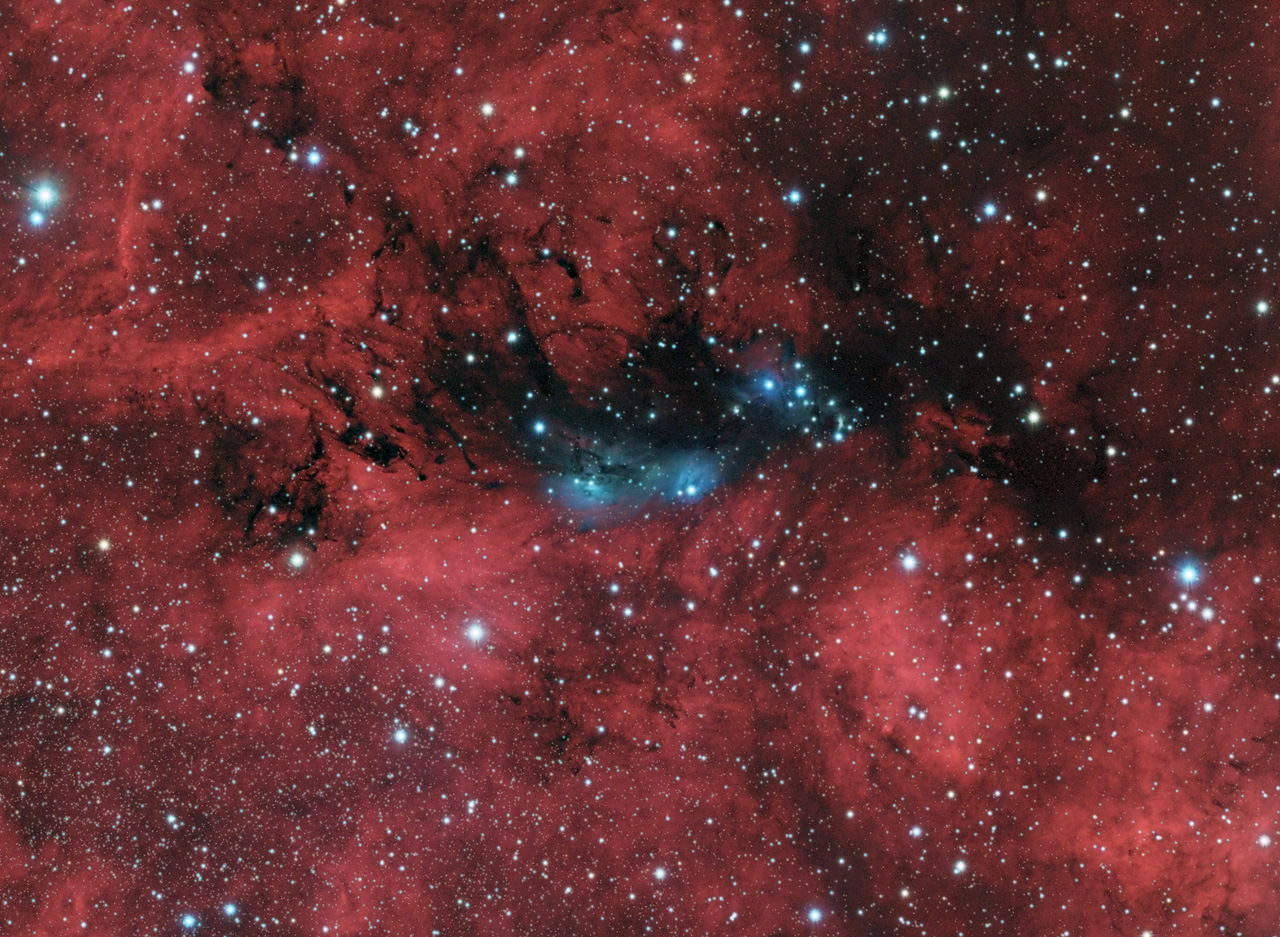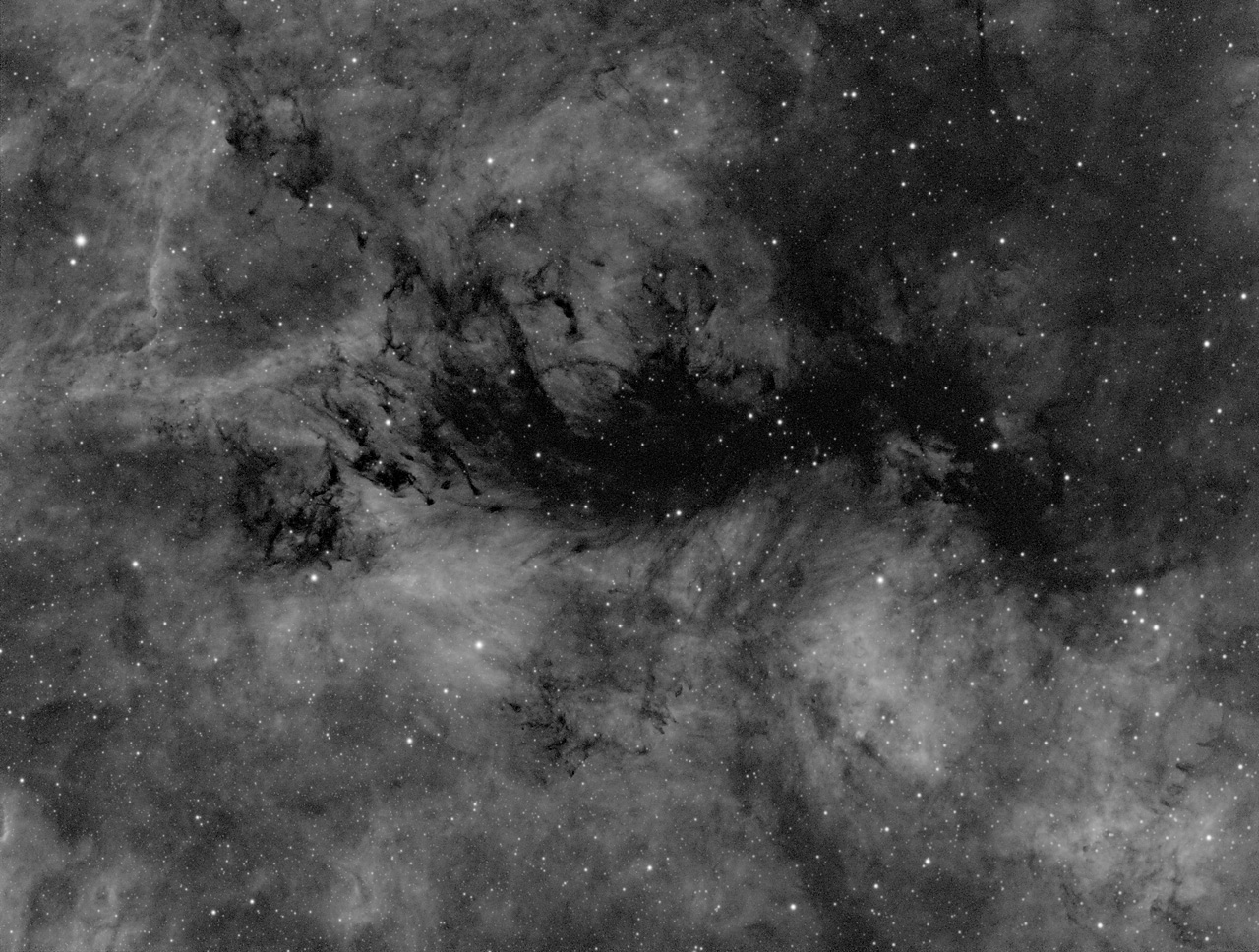The last of my images from OSP is NGC6914, a small reflection nebula in Cygnus. To be honest, this includes a lot of data captured from home in addition to what I captured at OSP. Specifically, the majority of the image (the red areas) are hydrogen, and knowing that I could get that with a narrowband H-alpha filter from home, I didn’t shoot with that filter at OSP.
But combining the RGB and H-alpha data did not work out the way that I had hoped. If there were no stars in the image it would be a simple matter of blending the H-a data with the red channel (perhaps even completely replacing the red data with H-alpha). But where there are stars the narrowband data looks very different because the brightness of the stars (largely seen as the “size” of the stars) is very different in the H-alpha versus red channels because the narrowband filter passes only a small percentage of the light from stars. I generally prefer nebula images to have the “reduced” stars you get with narrowband filters. For example, here is the (monochromatic) H-alpha image from this data set:
The problem is that the blue region (which is, after all, the main subject of this image) does not show up at all in the H-alpha data, and anything you could do to add it back in would also add the bigger stars of the RGB data. So for now, I have produced what is essentially the RGB image with some enhancement of the red from H-alpha data.
NGC 6914 is a small patch of blue reflection nebula in a vast sea of hydrogen emission nebula. It is located near the star Sadr, more or less in the direction of Deneb. It’s about 6,000 light-years from Earth.
All frames were captured with a ZWO ASI1600MM camera through a William Optics FLT-132 refractor, on a Paramount MyT mount. The RGB data is minimal – just 8 frames of 2 minutes for each color channel. Luminance consists of 40 frames at 2 minutes each, and 12 at 4 minutes. The H-alpha channel is 12 frames of 15 minutes each. The total integration time is almost 6 hours.

